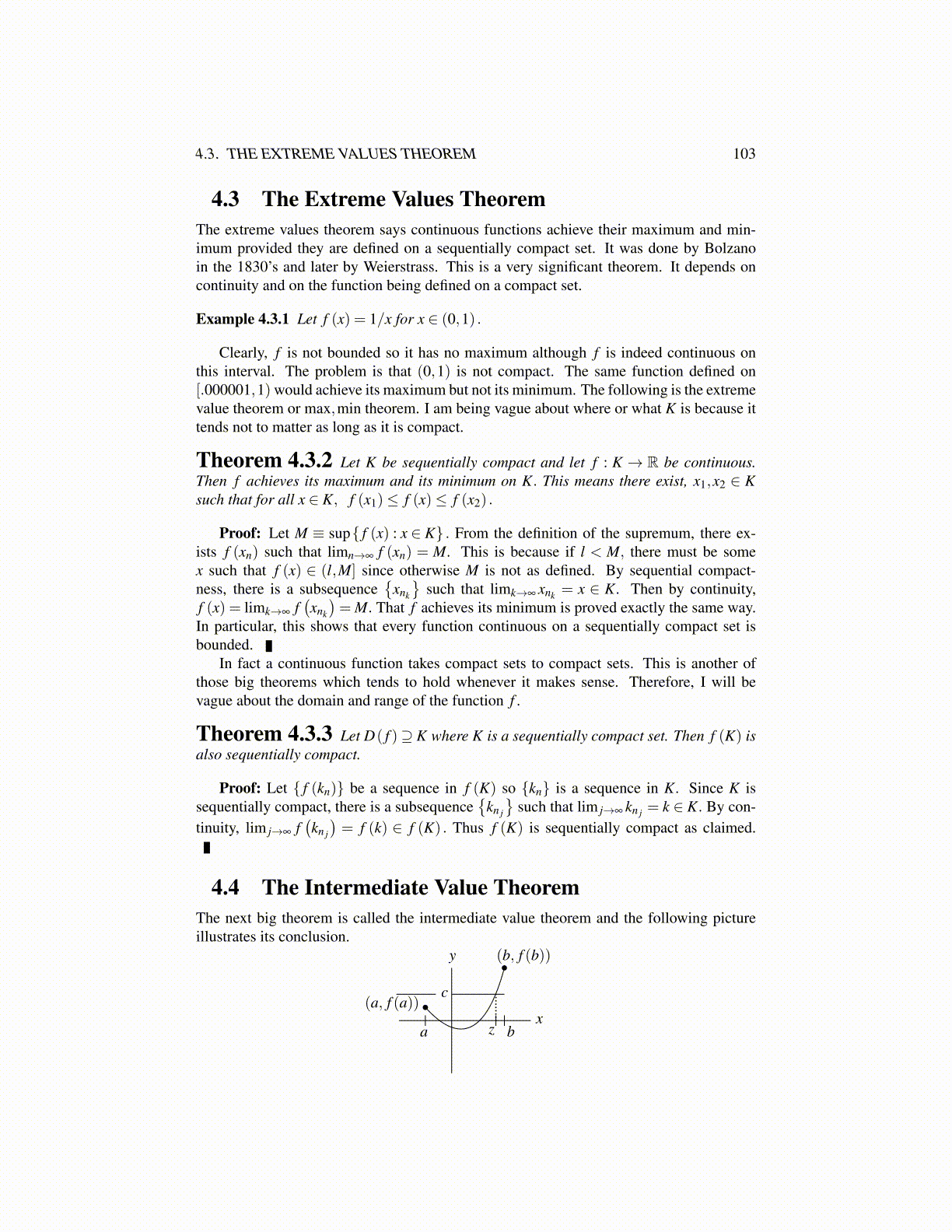
4.3. THE EXTREME VALUES THEOREM 103
4.3 The Extreme Values TheoremThe extreme values theorem says continuous functions achieve their maximum and min-imum provided they are defined on a sequentially compact set. It was done by Bolzanoin the 1830’s and later by Weierstrass. This is a very significant theorem. It depends oncontinuity and on the function being defined on a compact set.
Example 4.3.1 Let f (x) = 1/x for x ∈ (0,1) .
Clearly, f is not bounded so it has no maximum although f is indeed continuous onthis interval. The problem is that (0,1) is not compact. The same function defined on[.000001,1) would achieve its maximum but not its minimum. The following is the extremevalue theorem or max,min theorem. I am being vague about where or what K is because ittends not to matter as long as it is compact.
Theorem 4.3.2 Let K be sequentially compact and let f : K → R be continuous.Then f achieves its maximum and its minimum on K. This means there exist, x1,x2 ∈ Ksuch that for all x ∈ K, f (x1)≤ f (x)≤ f (x2) .
Proof: Let M ≡ sup{ f (x) : x ∈ K} . From the definition of the supremum, there ex-ists f (xn) such that limn→∞ f (xn) = M. This is because if l < M, there must be somex such that f (x) ∈ (l,M] since otherwise M is not as defined. By sequential compact-ness, there is a subsequence
{xnk
}such that limk→∞ xnk = x ∈ K. Then by continuity,
f (x) = limk→∞ f(xnk
)= M. That f achieves its minimum is proved exactly the same way.
In particular, this shows that every function continuous on a sequentially compact set isbounded.
In fact a continuous function takes compact sets to compact sets. This is another ofthose big theorems which tends to hold whenever it makes sense. Therefore, I will bevague about the domain and range of the function f .
Theorem 4.3.3 Let D( f )⊇ K where K is a sequentially compact set. Then f (K) isalso sequentially compact.
Proof: Let { f (kn)} be a sequence in f (K) so {kn} is a sequence in K. Since K issequentially compact, there is a subsequence
{kn j
}such that lim j→∞ kn j = k ∈ K. By con-
tinuity, lim j→∞ f(kn j
)= f (k) ∈ f (K) . Thus f (K) is sequentially compact as claimed.
4.4 The Intermediate Value TheoremThe next big theorem is called the intermediate value theorem and the following pictureillustrates its conclusion.
x
y
c
za b
(b, f (b))
(a, f (a))